 Mysteries
Mysteries  Mysteries
Mysteries  History
History 10 Surprising Stories About the Texas Rangers
 Humans
Humans 10 Philosophers Who Were Driven Mad by Their Own Theories
 Miscellaneous
Miscellaneous 10 Video-Game-Worthy Weapons and Armors from History
 Weird Stuff
Weird Stuff 10 Psychics Who Accurately Predicted Wartime Events
 The Arts
The Arts 10 Pieces of Art Inspired by a Broken Heart
 Health
Health 10 Science Fiction-Sounding New Medical Treatments
 History
History 10 Surprising Facts About the Father of Submarine Warfare
 Space
Space Ten Astonishing New Insights into Alien Worlds
 Weird Stuff
Weird Stuff 10 Bizarre Summer Solstice Rituals Still Practiced Today
 Mysteries
Mysteries Top 10 Haunting Facts About the Ghost Ship MV Alta
 History
History 10 Surprising Stories About the Texas Rangers
 Humans
Humans 10 Philosophers Who Were Driven Mad by Their Own Theories
Who's Behind Listverse?

Jamie Frater
Head Editor
Jamie founded Listverse due to an insatiable desire to share fascinating, obscure, and bizarre facts. He has been a guest speaker on numerous national radio and television stations and is a five time published author.
More About Us Miscellaneous
Miscellaneous 10 Video-Game-Worthy Weapons and Armors from History
 Weird Stuff
Weird Stuff 10 Psychics Who Accurately Predicted Wartime Events
 The Arts
The Arts 10 Pieces of Art Inspired by a Broken Heart
 Health
Health 10 Science Fiction-Sounding New Medical Treatments
 History
History 10 Surprising Facts About the Father of Submarine Warfare
 Space
Space Ten Astonishing New Insights into Alien Worlds
 Weird Stuff
Weird Stuff 10 Bizarre Summer Solstice Rituals Still Practiced Today
Top 10 Famous People Who Never Existed
Over the years mascots have popped up and become famous. Some believe that they are actual people, while others are obviously fake. From complete corporate mascots, all the way down to photoshopped faces, you will be surprised who is, and is not, real!
This is Eguchi Aimi. She’s the latest member of Japanese pop band AKB48, and a very lovely girl. But Eguchi Aimi is not what she seems. She shocked all her fans by revealing her dark secret – Aimi was, in fact, computer-generated, with parts taken from other band members and pasted over an existing girl to make Aimi Eguchi. Her personality was a little easier for her inventors to make up: according to her official AKB48 profile, Aimi is 16, from Saitama just outside Tokyo, competed in track and field and made her debut in a photo shoot for Shueisha’s Weekly Playboy magazine. Taking 150 gigabytes of memory, she’s the perfect example of the world we are heading to, in which men and machine, reality and “reality” will collide in a new way that would make humans blend into the digital world and the digital world come into flesh and bones. 150 gigabytes is enough to take a hefty chunk out of any computer. That’s almost 19 HD Blu-ray movies!

In 1927, someone in the admissions office at Georgia Tech accidentally sent student Ed Smith two registration forms instead of one. Feeling mischievous, Smith filled out one form for himself and the other for George P. Burdell, a student he completely made up. When Smith arrived at school, he kept “George” alive by enrolling “George” in all of his classes. Ed even did all the assigned work for “George” and signed it under his name! “George” actually did so well he eventually graduated, but when other students found out about the hoax, instead of stopping it they kept him alive. According to “George’s” resume:
“George Burdell flew 12 missions over Europe during World War II, and served on MAD magazine’s Board of Directors from 1969 to 1981. In 2001, when Burdell was supposedly 90 years old, he nearly became Time magazine’s Person of the Year after garnering 57 percent of online votes.”
Georgia Tech, of course, knows about this whole plot and considers it their most celebrated joke. You can keep in touch with “George” on his Facebook page, which boasts more than 4,000 friends.

When Rob Schneider’s 2001 movie comedy “The Animal” came out, no one had anything good to say about it. In fact, it was so bad the Sony marketing division came up with a fake press and movie critic. In fact, “The Animal” was just one of many box office bombs that Manning enthusiastically praised. He also lent his critical support to “Hollow Man”, “Vertical Limit” and “The Patriot”. When two movie lovers from California, Omar Rezec and Ann Belknap, read the review from NewsWeek, they decided to sue Sony. They filed a class-action lawsuit on behalf of all film-goers who saw movies based on Manning’s “reviews.” In the end, Sony settled out of court, paying real money to anyone duped by the fake critic. Who knows if movie companies still do this? Someone is always calling the next movie release good. Who knows?
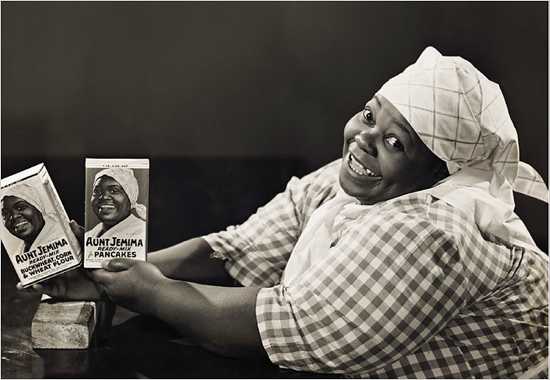
Currently owned by the Quaker Oats Company of Chicago, Aunt Jemima’s trademark dates back to 1893, but was first registered in April 1937. She originated from the “Minstrel Show” as one of their stereotypical African-American characters. She was later adopted by commercial interests to represent the Aunt Jemima brand. The Aunt Jemima character received the Key to the City of Albion, Michigan on January 25, 1964. An actress portraying Jemima visited Albion many times for fundraisers. Soon after Quaker Oats introduced Aunt Jemima syrup in 1966. This was followed by Aunt Jemima Butter Lite syrup in 1985, and Butter Rich syrup in 1991. She has simply become just a logo for a brand name over the years. I always see her while I walk down the breakfast section of my local grocery store. She has an unforgettable smile and friendly look, it’s perfect if you wanted to sell something!
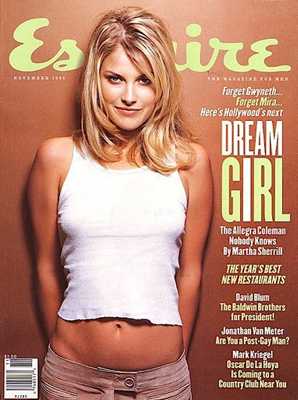
Allegra Coleman was a fictional celebrity, invented by writer Martha Sherrill for the purposes of a hoax magazine article. Model/actress Ali Larter portrayed the imaginary model in Sherrill’s feature, which appeared in Esquire (November 1996). After her debut, an article described an upcoming movie with Woody Allen, her tempestuous relationship with David Schwimmer (including a scandal involving nude photographs supposedly taken by paparazzi) and her friendship with Deepak Chopra. The hoax was revealed by Esquire editor Edward Kosner in a press release to the newswire services. Sherrill later wrote a satirical novel on Hollywood life, which featured Allegra Coleman as a prominent character. The novel, My Last Movie Star, was published by Random House in 2003. The incident jump-started Ali Larter’s acting career, and she went on to many TV shows, movies (Legally Blonde, Final Destination) and the role of Niki Sanders in NBC’s Heroes. Even after it was revealed she was a hoax, requests still came pouring in for her to star in movies. She was, essentially, an actor playing an actor.
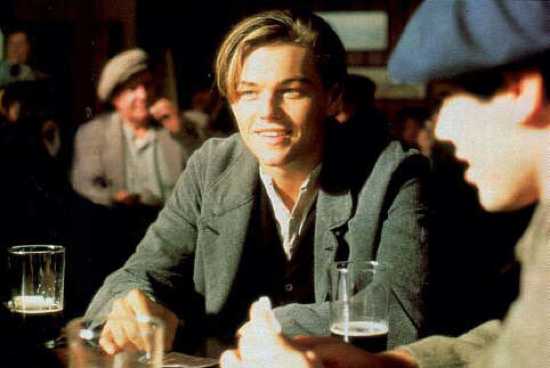
We know Jack Dawson from the Titanic, but did he really exist? There have been no records of him even being on the ship that night, though it is possible that he secretly snuck abroad. Rose DeWitt Bukater and Jack Dawson are fictional characters created by James Cameron.
There was a man named J. Dawson who died aboard the Titanic, but James Cameron did not know that he existed until AFTER he wrote the Titanic screenplay. He did not base the Jack character on this J. Dawson person. The man’s gravestone bears the inscription “J. Dawson,” and no one knows what the “J” stands for. Some people believe it was Joseph or James. But who really knows? J. Dawson could have been “Jack Dawson”.
Gorillaz is a musical project created in 1998, by British musician Damon Albarn and British cartoonist Jamie Hewlett, co-creator of the comic book Tank Girl. This project consists of the Gorillaz music itself, and an extensive fictional universe depicting a “virtual band” of comic book characters. This band is composed of four animated members: 2D (lead vocalist, keyboard), Murdoc Niccals (bass guitar), Noodle (guitar and occasional vocals) and Russel Hobbs (drums and percussion). Musion® Eyeliner™ System was the holographic projection technology behind the 3D animation of the popular band, who performed ‘live’ at the 2006 Grammy Awards. What’s even more surprising is that the Eyeliner™ System also re-created a virtual Madonna, who performed her hit single Hung up on the same 3D stage. Both the live and TV audiences who watched the performance had no clue that what they were watching, at least in the first few minutes of Madonna’s performance, was just virtual reality. The Grammy’s performance was a variation on the MTV Europe Music Awards in Lisbon, with the added attraction of a virtual superstar. Yes, that’s right. The Madonna you saw on stage with Gorillaz at the Grammys was as virtual as her cartoon counterparts. However, the rappers from De La Soul who came onstage were, in fact, the real deal.
Hatsune Miku is a Vocaloid, but what is a Vocaloid, you ask? The Vocaloid software enables users to synthesize singing, by typing in lyrics and melody. It uses synthesizing technology with specially recorded vocals of voice actors or singers. The word “Vocaloid” comes from “Vocal”, as in singing or talking, and “Android” to represent the computer or robotic side. To create a song, the user must input the melody and lyrics. She’s not human, but a computer. An extremely popular computer! In fact, I’m a huge fan of Vocaloid myself! There is more than just Miku (Luka is my favorite!). Since she’s not real, her concerts are 100% holographic. There are 16 projectors that are aimed at a special see through screen; when projected in sync it adds a 3D effect without the need for 3D glasses. After 2007, Hatsune Miku was released in Japan by music company Crypton. The initial sales of Hatsune Miku were so high that Crypton could not keep up with the demand. In the first 12 days of sale, nearly 3,000 sales reservations were made. Later reports showed that she had sold 60,000+ copies of her software – normally selling 1,000 copies of a synthesizing software was considered good business.
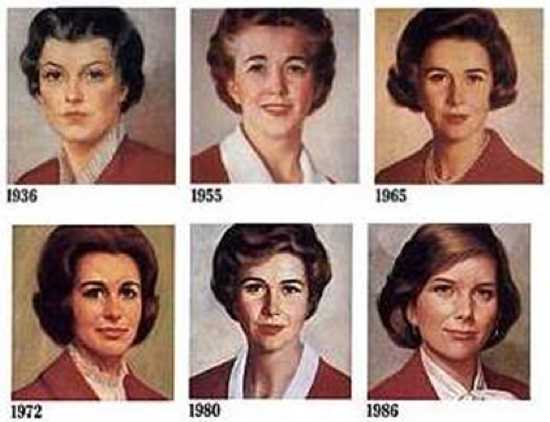
The Washburn Crosby Company of Minneapolis, one of the six big milling companies that merged into General Mills in 1928, received thousands of requests each year in the late 1910s and early 1920s for answers to baking questions. In 1921, managers decided that it would be more intimate to sign the responses personally; they combined the last name of a retired company executive, William Crocker, with the first name “Betty,” which was thought of as “warm and friendly.” The signature came from a secretary, who won a contest among female employees. (The same signature still appears on Betty Crocker products.) Finally, in 1936, Betty Crocker got a face. Artist Neysa McMein brought together all the women in the company’s Home Service Department and “blended their features into an official likeness.” The widely circulated portrait reinforced the popular belief that Betty Crocker was a real woman. One public opinion poll rated her as the second most famous woman in America, after Eleanor Roosevelt. Over the next seventy-five years, her face has changed seven times: she became younger in 1955; she became a “professional” woman in 1980; and in 1996 she became multicultural, acquiring a slightly darker and more “ethnic” look.
P.S. Sara Lee is a real person!
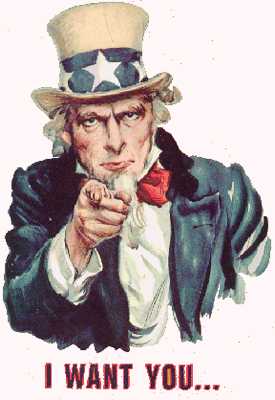
If you live in America then I’m almost 100% sure you have seen at least one form of “Uncle Sam.” If you’re not familiar with him, he is a personification of the federal government or citizens of the US, typically portrayed as a tall, thin, bearded man wearing a suit of red, white, and blue. But where did he come from? J.M. Flagg’s 1917 poster was based on the original British Lord Kitchener poster from three years earlier, which was used to recruit soldiers for both World War I and World War II. Flagg used a modified version of his own face for Uncle Sam, and veteran Walter Botts provided the pose. The face also bears resemblance to the real Samuel Wilson. During the War of 1812, a N.Y. meat packer named Samuel Wilson supplied beef to the U.S. Army. The barrels were stamped with “U.S.” for the “United States,” but soldiers (they always seem to speak their own language) started describing the food as being “Uncle Sam’s.”
A local newspaper spread the story and before you know it, “Uncle Sam” became a popular nickname for the federal government. Although he is based upon several people, he never officially lived or existed. The poster has become an iconic symbol for the US, especially during times of war or conflict.








